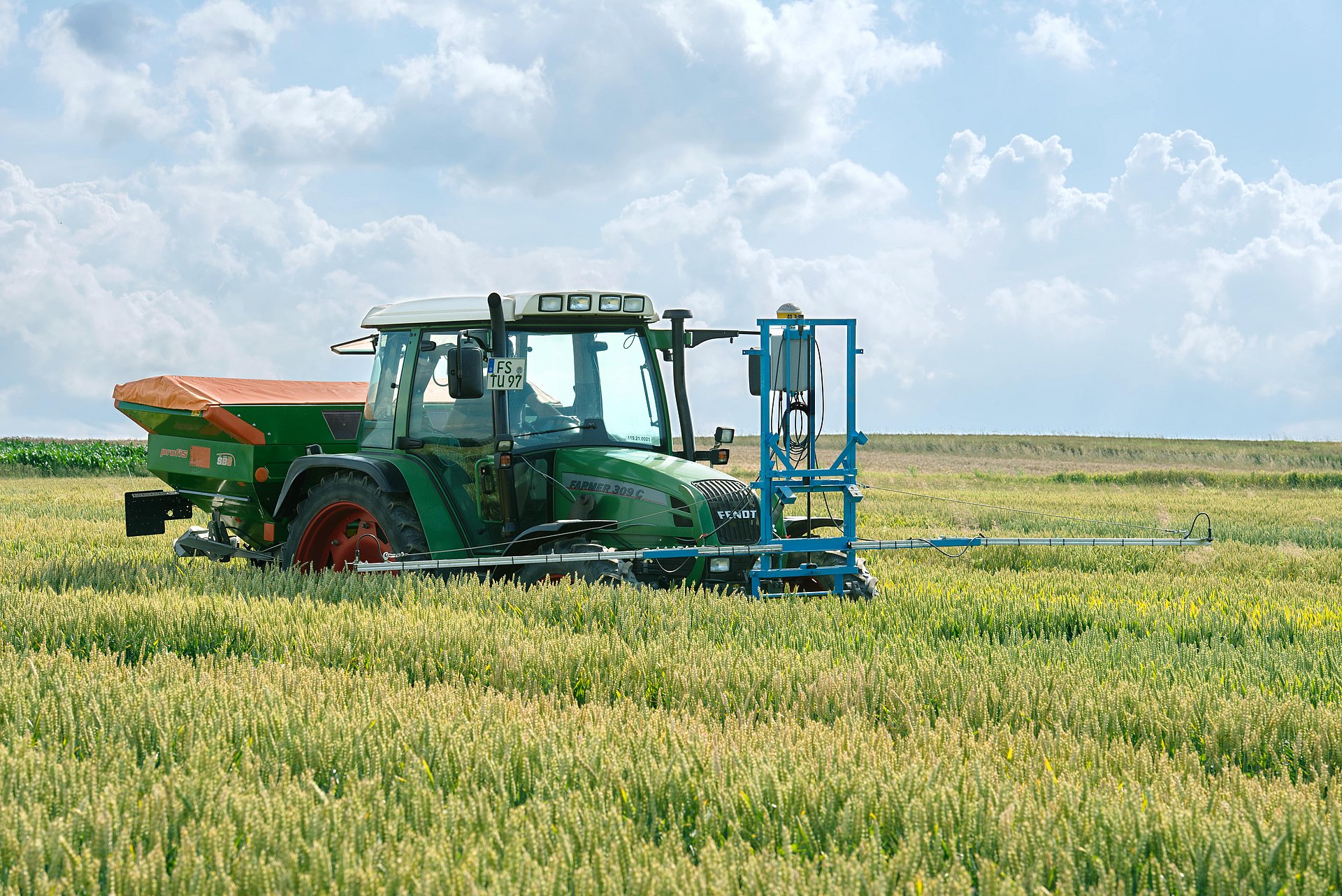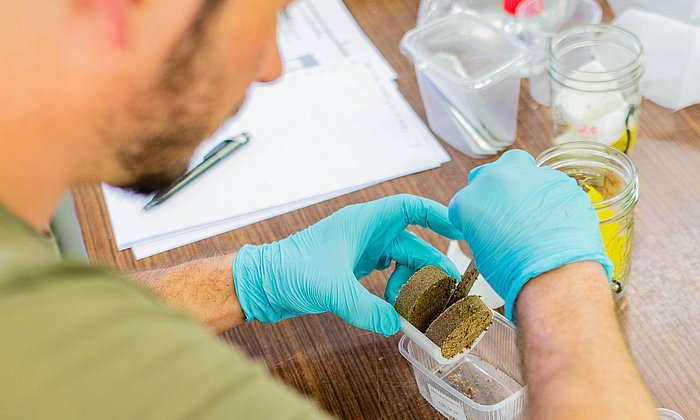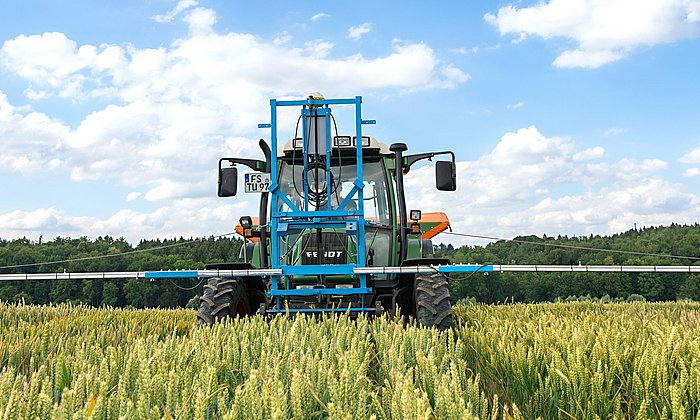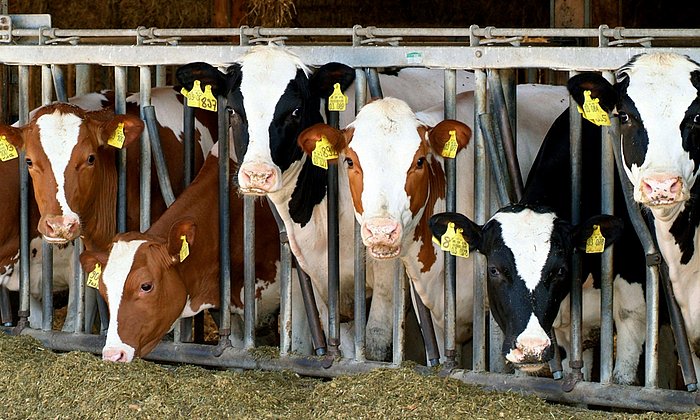Researchers calculate billions in environmental and health savings
Eco-efficient fertilization

Urea helps plants grow. More than half of all synthetic fertilizers used worldwide are based on urea because it is easy to store, transport, and apply. “However, plants can only absorb urea as a fertilizer directly to a small extent. It is only after it has been converted into ammonium or nitrate that it becomes available to plants as a source of nitrogen,” explains Professor Urs Schmidhalter of the Chair of Plant Nutrition at the TUM.
Urea enters soils and waters
The conversion process releases ammonia, which volatilizes in the atmosphere and also enters deeper soil layers and thus ground water. This results in two problems: first, nitrogen losses mean a high financial cost and yield losses for farmers. Second, this volatilization is responsible for acidification and nutrient enrichment of soils and waters.
80 to 95 percent of total ammonia emissions in the European Union in 2018 were due to these nitrogen losses. Synthetic and organic fertilizers are major contributors to the losses. The formation of particulate matter from ammonia can thus cause health problems such as respiratory diseases as well as cardiovascular diseases.
Leakage of ammonia into the atmosphere can be reduced
There is a solution to this problem. The addition of “ureas inhibitors” reduces gaseous ammonia losses. These enzymes, when added to the fertilizer, block, for some time, the urease enzymes which are necessary for the conversion of urea into ammonia and carbon dioxide. „Studies have shown that the use of urease inhibitors can reduce emissions by 50 to 80 percent. Thus, instead of volatilising into the atmosphere, a much larger amount of nitrogen is made available to plants for yield formation“, says Schmidhalter.
Germany is the first country to already require the addition of urease inhibitors to granulated urea through the 2020 National Fertilizer Ordinance. The European Union requires mandatory ammonia emission reductions from all member countries by 2030.
Eco-efficient fertilization as a cost effective protective measure
A team of TUM researchers from the Department of Plant Nutrition has now developed a concept to calculate the societal and environmental benefits of using urease inhibitors. They calculate a benefit of urea emission reduction for ecosystems and human health of 17.5 euros per kilogram of urea emission on average while only increasing the cost of urea fertilizer by about 10 percent, which equates to less than 10 cents per kilogram of nitrogen.
The cost-benefit assessment for urea emission reduction measures will enable policy makers to implement the specific measures," Schmidhalter and his collaborator Associate Professor Yuncai Hu say. Their calculations are also helpful for other regions around the world. While the European Union produces 5 percent of global urea emissions, China is responsible for 30 percent, India for 24 percent and the United States for another 5.4 percent.
"For 2018, the cost savings calculated for Germany when using urease inhibitors are 0.3 billion euros, for Europe 3 billion, for China 9 billion and for the whole world 63 billion. We have calculated these figures to supplement the article and included the very latest information," says Prof. Schmidhalter.
According to Professor Schmidhalter, the use of urease inhibitors represents by far the most cost-effective method of reducing ammonia emissions from agriculture. “Further reductions, especially from livestock, will be much more costly,” Schmidhalter asserts.
Yuncai Hu and Urs Schmidhalter (2021): Urease inhibitors: opportunities for meeting EU national obligations to reduce ammonia emission ceilings by 2030 in EU countries. Environ. Res. Lett. 16 084047. URL: https://iopscience.iop.org/article/10.1088/1748-9326/ac16fe
This work was funded by the German Federal Ministry of Food and Agriculture (BMLE) as part of the Green-Windwo4_0 project.
Technical University of Munich
Corporate Communications Center
- Dr. Katharina Baumeister / Susanne Neumann
- katharina.baumeister@tum.de
- presse@tum.de
- Teamwebsite
Contacts to this article:
Prof. Dr. Urs Schmidhalter
TUM School of Life Sciences
Chair of Plant Nutrition
Phone: 08161/ 71-3391
schmidhalter@wzw.tum.de



